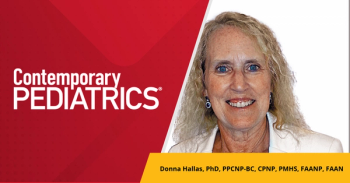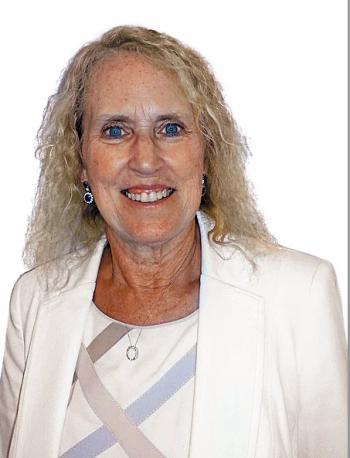
- April 2023
- Volume 40
- Issue 03
Donna Hallas says follow these steps to improve your NP practice
Read Donna Hallas’ thoughts on our April issue here!
Applying Andrew Schuman’s 10-Step Program to NP practices
In the article,
Nurse practitioner (NP) practices face similar concerns and problems that Schuman describes. Many of the suggestions in the 10-step process may help NP practices as well. However, the recommendation for Step 7, no-shows, must be further investigated by NPs who provide care to patients who have Medicaid insurance, as regulations vary state by state.
Some Insights for nurse practitioner practices
Step 5 Document efficiently and consider office scribes
Step 5 in Schuman’s article describes the problems with documentation and ways to remove some of the frustrations faced by pediatricians, and from my perspective, frustrations felt by large numbers of NPs. Researchers who analyzed the 2018 survey data from the American Academy of Pediatrics (AAP) Pediatricians Life and Career Experience Study (PLACES) revealed that three-fourths of the 1,069 study participants identified EHR documentation as a major or moderate burden.1 Half of the study participants reported billing and insurance as burdensome, and 42.7% reported quality and performance measurements as a practice problem.1 In a hospital based qualitative study in which respondents included physicians, NPs, and other providers, physicians’ reported the advantages as improved patient quality and safety with EHR alerts and reporting of adverse events while NPs reported an understanding of doctors (Team) treatment plans as well as detection of medical errors, both in real-time.2 Disadvantages reported by physicians and NPs included the time consuming nature of documentation.2 The researchers concluded that when the EHR is a burden that slows practice performance, the positive effect on quality of care and patient safety may be reduced.2
Schuman’s article provides ways to document efficiently by using voice dictation or EHR templates to speed note completion. He also recommends the use of scribes. I recall my first encounter with a scribe, and immediately thought, how cool is this: my scribe is recording all the questions I am asking the parents and their responses while I am talking with the parent and simultaneously having fun interacting and playing with the child gathering a detailed history, performing an exam, and providing anticipatory guidance without the burden of me doing the documentation! Reading the scribes work was a pleasure.
Step 7: No-shows
We all cringe when we think about no-shows! Even when the nurses, medical assistants, or receptionist call and confirm the appointment the day before, my pediatric practice had no-shows! No-shows disrupt the flow of our practice. Often the no-shows need to be seen, thus, they must be rescheduled. Schuman’s suggestions may not be allowed for the pediatric populations whose primary insurance is Medicaid. Each NP must check their individual state laws concerning charging no-show Medicaid patients. In New York State3 charging a fee to Medicaid beneficiaries for failed (no-show) appointment is unlawful. In Utah, there are 4 strict criteria for billing no-show Medicaid patients and providers must follow the Medicare/Medicaid compliance program required by federal law, if they decide to bill for the no-show.3
What can NPs do to reduce no-show appointments by their Medicaid patients? There have been several published quality improvement projects focusing on reducing no-show appointments. The evidence reveals that multiple factors impact no-shows, including patient behaviors, financials situations, environmental factors, and scheduling policies.4 Studies have shown that telephone reminders, text messages, phone calls, and emails reduced the no-show rate from 20.99% to 7.07%.4 The EHR can be used to access patients’ no-show history and predict no-show rates, thus allowing providers to create over-booking strategies that account for no-shows while having a solid work-flow.4
It will require an all hands-on deck effort from everyone in a practice to think about their individual patients who have no-show behaviors, determine which contact methods work best for each potential no-show parent, and determine the best ways to reduce the no-show rate and improve practice performance. Remember to share your successes to benefit all our practices and help us reduce no-show rates. Also, remember to thank your parents who do arrive on time!
References:
1. Frintner MP, Kaelber DC, Kirkendall ES, Lourie EM, Somberg CA, Lehmann CU. The effect of electronic health record burden on pediatricians’ work-life balance and career satisfaction. Appl Clin Inform. Published online August 2, 2021.2021;12(3):697-707. doi:10.1055/s-0041-1732402
2. Upadhyay S, Hu H. A qualitative analysis of the impact of electronic health records (EHR) on healthcare quality and safety: clinicians’ lived experiences. Health Services Insights. Published online March 3, 2022. 2022;15:1-7. doi:10.1177/11786329211070722
3. Davis MW. Ignorance isn’t bliss: no-show fees for Medicaid patients. Dental Business/Regulatory Updates. Published online Jul 8, 2021.
4 Marbouh D, Khaleel I, Shangiti KA, et al. Evaluating the impact of patient no-shows on service quality. Risk Manag Healthc Policy. Published online June 4 2020. 2020;13:509-517. doi:10.2147/RMHP.S232114
Articles in this issue
over 2 years ago
Infantile spasms: A frontline guide for pediatriciansover 2 years ago
Juvenile spring eruption in a young boyover 2 years ago
Kudos to WHONewsletter
Access practical, evidence-based guidance to support better care for our youngest patients. Join our email list for the latest clinical updates.








